The plant Echeveria (Echeveria), which is also called Echeveria, is part of the Tolstyanka family. This genus is represented by herbaceous succulent perennial plants. It unites 170 species, with the most widespread in Mexico. However, some of the species of Echeveria in natural conditions can also be found in South America and the USA. The plant was named after the Mexican artist Atanasio Echeverria y Godoy, who created illustrations for books on the plant kingdom of Mexico. Locals call Echeveria the "stone rose" or "stone flower".
Content
- 1 Brief description of cultivation
- 2 Features of echeveria
- 3 Echeveria care at home
- 4 Reproduction methods
- 5 Echeveria pests and diseases
- 6 Types and varieties of echeveria with photos and names
- 6.1 Echeveria agave (Echeveria agavoides)
- 6.2 Echeveria white-haired (Echeveria leucotricha)
- 6.3 Echeveria cushion (Echeveria pulvinata)
- 6.4 Echeveria pilosa (Echeveria pilosa)
- 6.5 Echeveria crimson (Echeveria coccinea)
- 6.6 Echeveria harms (Echeveria harmsii)
- 6.7 Echeveria desmetiana
- 6.8 Echeveria graceful (Echeveria elegans)
- 6.9 Echeveria laui
- 6.10 Echeveria multicaulis (Echeveria multicaulis)
- 6.11 Echeveria nodular (Echeveria nodulosa)
- 6.12 Echeveria shaviana
- 6.13 Echeveria bristly (Echeveria setosa)
- 6.14 Echeveria lingual (Echeveria linguaefolia)
- 6.15 Echeveria tiled (Echeveria x imbricata)
- 6.16 Echeveria Black Prince
- 6.17 Echeveria humpback-flowered Pearl of Nuremberg (Echeveria x gibbiflora Perle von Nurnberg)
- 6.18 Echeveria humpback-flowered Metallica (Echeveria x gibbiflora Metallica)
- 6.19 Echeveria Miranda
Brief description of cultivation
- Bloom... It is observed in spring or summer time, and its duration is approximately 20 days.
- Illumination... Light shading, bright ambient light, or just bright light.
- Temperature regime... In the warm season, the plant feels fine at room temperature. And in the winter months, it needs coolness - from 9 to 10 degrees.
- Watering... It is necessary to moisten the substrate in the pot systematically, but only after the earthen lump is completely dry.
- Air humidity... Feels normal at any level of humidity.
- Fertilizer. It is necessary to feed the bush only during the growing season with a frequency of 1 time in 30 days. For this, a mineral complex for succulents and cacti is used. During the dormant period, the plant does not need fertilization.
- Dormant period... During the winter months.
- Transfer... While the young bush is subjected to this procedure every year in the spring, older specimens are transplanted 1 time in 3 or 4 years at the very beginning of the growing season.
- Reproduction... Leafy or stem cuttings, the seed method is less popular.
- Diseases... Fungal diseases.
- Pests... Not affected.
Features of echeveria
Echeveria is a succulent plant, tough, juicy and fleshy leaf plates of which are collected in dense rosettes, reaching 3–40 centimeters across.This plant accumulates moisture in its leaves, which is why they are so juicy. This genus is represented by stemless species and forms with long stems. Depending on the type and variety, leaf plates can differ in color, shape and size.
On a long vertical or lateral peduncle, erect lateral inflorescences are formed, which consist of small flowers. These five-membered flowers can be brownish-red, orange-red or yellow, while the petals and sepals are quite juicy. Depending on the brightness of the lighting, the saturation of the color of the flowers can vary: the flowers formed in the shade, as a rule, are colored yellow, and those formed under bright sunlight have a reddish tint. Such a plant can freely form intergeneric and interspecific forms, of which the most widespread are pachyveria, sediveria and graptoveria. Echeveria is quite popular with flower growers.
Echeveria care at home
Echeveria perfectly tolerates both high and low air temperatures, and it is also not afraid of direct rays of the sun and excessively dry air in the room. In this regard, a south-facing window is perfect for it.
In the warm season, the bush grows normally and develops at room temperature, which is typical for a dwelling at this time of year. In winter, the flower is rearranged in a place where it is not warmer than 10 degrees. If you cannot provide the plant with such wintering conditions, then try to ensure that the warm bush receives enough light. Otherwise, it can stretch out strongly, and its stems will be exposed at the same time.
Watering
Watering is carried out only after the clod of earth in the container is completely dry. To do this, use filtered or well-settled water, the temperature of which should be close to room temperature. If you water the bush very often, it can lead to rot on the root system and lower leaf plates. Also, pay attention to the fact that water should not stagnate near the stem, and excess moisture must necessarily flow out of the drainage holes into the pan. You can understand that the bush needs urgent watering by looking at the leaf plates: they become soft and wrinkle.
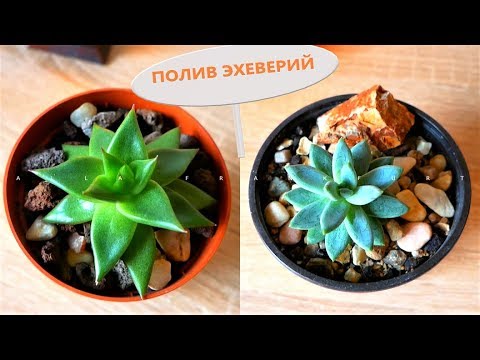

Watch this video on YouTube
Air humidity
The humidity level of the air is not important for this plant. It, like all other succulent plants, does not need spraying and a regular warm shower.
Fertilizer
Echeveria must be fed with great care, because if there is too much fertilizer in the soil mixture, this can provoke the appearance of rot on the foliage. Fertilizers are applied to the substrate only during the growing season, once every 30 days. For this, a mineral complex fertilizer for cacti or succulents is suitable. From September all feeding should be stopped. In the event that you often transplant a bush with a complete replacement of the soil mixture, then you can completely refuse feeding.
Echeveria transplant
While the bush is young, it is transplanted annually in spring, and both the container and the soil mixture are replaced. Adult echeveria is transplanted much less often - once every 3 or 4 years.
The pot for the transplant is chosen one with holes for drainage at the bottom. It should be short, but rather wide. At its bottom, a drainage layer should first be laid, for this you can use expanded clay or pebbles. Then the bush is transferred from the old container to a new one, while all the voids should be filled with fresh substrate, which includes peat, expanded clay and loamy soil (1: 1: 3), and also a handful of charcoal.
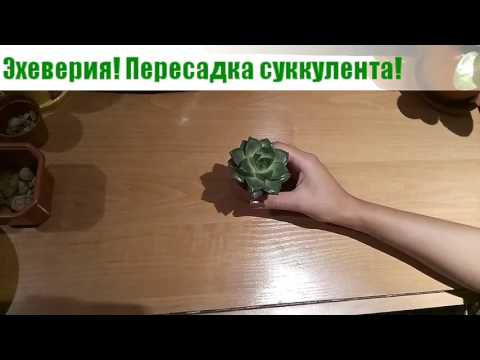

Watch this video on YouTube
Reproduction methods
Growing from seeds
The longest and most difficult way to reproduce echeveria is seed.First, you need to get seed. For this you need a mature plant. When it blooms, manually pollinate the flowers. Next, you need to collect the seeds in time immediately after they ripen.
Fill a small container with a mixture of sand and peat and sow the seeds into it: they are evenly distributed over the surface of the soil mixture and only slightly pressed, without sprinkling on top. Water the crops, cover them with glass or plastic on top, and put them in a well-lit and warm (20 to 25 degrees) place. For sowing, it is recommended to use a small container with drainage holes at the bottom. They are needed so that excess moisture can drain into the pan. If everything is done correctly, then the first seedlings should appear after 15-20 days. The picking of seedlings in individual small pots is carried out only after they have formed 3 true leaf plates. Transplanted plants need a lot of light, so the most well-lit windowsill is chosen for them.
Stem cuttings
Harvesting of apical cuttings is carried out in mid-March. To do this, cut off the stem from the parent bush and immediately plant it in the substrate. Fill a container with sand, to which you have added a little compost soil, and lightly press a piece into it.
Cuttings planted for rooting are placed in a well-lit and warm (from 22 to 24 degrees) place, and do not forget to water them regularly. If all conditions are met, the cuttings should give roots after 1-1.5 weeks. Then they are planted in permanent pots.
Leafy cuttings
Relatively rarely, indoor Echeveria is propagated by leaf cuttings. The fact is that in this case, success depends on your skill and experience. You will need to separate the large lower leaf plate from the parent shrub without injuring it. Leave it outdoors for a few hours to dry. Next, lay the sheet on the surface of the sand, and it should be in a horizontal position. Lightly moisten the surface of the substrate. The first roots should appear after about 4 weeks. However, the leaf will take root completely and form a bush only after three or four months.
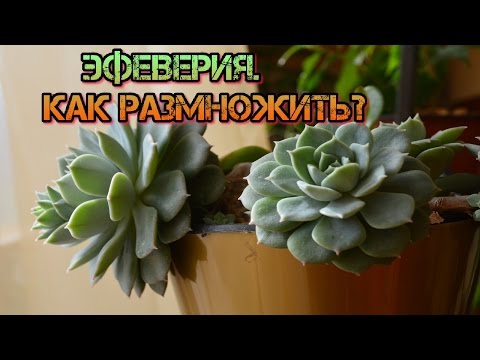

Watch this video on YouTube
Echeveria pests and diseases
Diseases and their treatment
If you water Echeveria too often, or if water constantly stagnates in the soil mixture, this can lead to the development of fungal diseases. In order to avoid this, it is necessary to water the plant correctly, or rather, only after the clod of earth in the pot has completely dried out.
Also, with improper care or inappropriate growing conditions with a plant, the following problems may arise:
- Shoots become brittle, gray or blackened... This happens in the case of regular stagnation of liquid in the substrate, provided that the room is fairly cool.
- The socket has become elongated and excessively loose... The bush feels a strong lack of light.
- Fading foliage... This means that Echeveria feels a lack of nutrients and moisture.
- Sockets and foliage shriveled... This happens when the bush is forgotten to water in extreme heat.
Pests
This succulent is highly resistant to different types of pests.
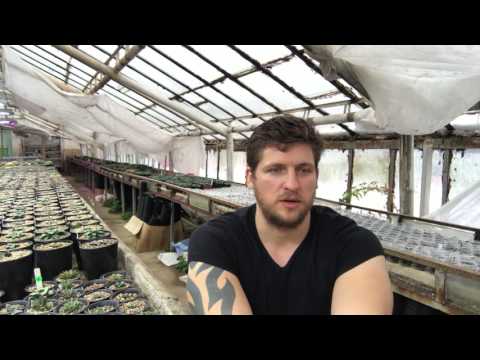

Watch this video on YouTube
Types and varieties of echeveria with photos and names
Below will be described those types and varieties of Echeveria, which are most popular in room culture.
Echeveria agave (Echeveria agavoides)
This Mexican perennial herb is about 15 centimeters tall. A dense rosette consists of oblong-shaped leaf plates of a silvery-greenish shade, which reach about 90 mm in width. The tops of the leaf plates have a red tint.
Echeveria white-haired (Echeveria leucotricha)
This succulent shrub is native to Mexico and can vary in height from 15 to 20 centimeters.Its loose rosette consists of reverse-lanceolate sheet plates, the surface of which is covered with dense white pile. The tops of the leaves are brownish red. The foliage reaches 60–100 mm in length, while its width is about 25 mm. The surface of the stem is covered with light red tomentose pubescence.
Echeveria cushion (Echeveria pulvinata)
The leaf plates of this species are juicy green in color, their surface is velvety to the touch. On powerful peduncles, yellowish-orange flowers are formed. The stem is covered with felted reddish pubescence, and the obovate foliage is covered with thick white hair. The leaves are about 65 mm long and 40 mm wide.
Echeveria pilosa (Echeveria pilosa)
The stem of this species is naked, and on the surface of the leaf plates there is a gentle pubescence.
Echeveria crimson (Echeveria coccinea)
The height of such a plant is about 0.7 m. Along the entire length of the shoot, leaf plates are located, which have a gentle pubescence, represented by soft pile. The seamy surface and edge of the leaves take on a crimson hue in direct sunlight.
Echeveria harms (Echeveria harmsii)
This succulent shrub branches very weakly, its homeland is Mexico. In the area of the leaf scar on the shoot of such a plant, aerial roots are formed. Oblong-rhombic sheet plates are assembled into rosettes, their length is 20–40 mm, and their width is 15 mm. On the surface of the foliage, there is a gentle pubescence, and the upper edge has a red border. The flowers are about 30 mm long, they are red, while the edge of the petals is yellow.
Echeveria desmetiana
The rosette is formed from pale blue sheet plates. As the bush grows, its long shoots become ampelous. The appearance of orange-yellow flowers on the lateral petioles of Echeveria occurs in mid-July. This species is shade-tolerant, and it also reacts relatively calmly to excessively frequent watering.
Echeveria graceful (Echeveria elegans)
This herbaceous perennial plant native to Mexico has lateral daughter rosettes. Stem height is about 50 mm. On the surface of the elongated greenish leaf plates there is a waxy coating of a light blue hue, they reach 60 mm in length and up to 10 mm in width. During flowering, the bush is decorated with yellowish-red flowers.
Echeveria laui
This species was found in Mexico only in 1976. Such a stemless plant is characterized by slow growth. The rosette reaches about 20 centimeters in diameter, it consists of juicy, spectacular leaf plates of a whitish-blue color, which is associated with a thick coating of wax. The foliage is about 60 mm long and up to 30 mm wide. On the surface of large orange flowers there is also a coating of wax.
Echeveria multicaulis (Echeveria multicaulis)
This species is represented by a dwarf shrub with strong branching. He comes from Mexico. The height of the plant is about 20 centimeters, its loose rosette consists of leaf plates, the length of which is about 25 mm, and the width is up to 15 mm, they are colored dark green and have an obovate shape. The foliage takes on a reddish tint along the edge. The outer surface of the flowers is red, and the inner one is yellow, their length is 10-13 centimeters.
Echeveria nodular (Echeveria nodulosa)
The height of such a succulent plant is about 50 cm. The loose rosette consists of obovate foliage, the front surface of which is rich green, and the back surface is pink. The leaves are about 80 mm long and about 50 mm wide. Their front surface, as well as the edge, is decorated with red stripes. The length of the flowers is about 17 centimeters, they are red from the inside, and from above they are painted in a yellow tint.
Echeveria shaviana
This species differs from the others in that its flat leaf plates are not too fleshy and have a wavy edge. The plant has a shortened stem, and its leaves are pressed against each other very tightly, therefore, the bush looks very similar to a cabbage head.Around the middle of July, flowering begins, at this time on a bush on two or three peduncles, flowers bloom alternately, of which there may be several dozen.
Echeveria bristly (Echeveria setosa)
The stem of this perennial herb is about 10 centimeters high. A rosette is formed from rich green reverse lanceolate leaf plates, reaching 15 centimeters in diameter. The leaves are about 50 mm long and up to 20 mm wide. On their surface there is a rare pubescence, which is a white hair. During the flowering period, the bush is decorated with reddish-yellow flowers.
Echeveria lingual (Echeveria linguaefolia)
The height of the shrub varies from 20 to 25 centimeters, as a rule, it forms a pair of fleshy trunks. The drooping peduncle in the lower part may branch in some cases. At its tops, straw-colored flowers are formed.
In addition to the species Echeveria in room culture, they are quite widespread hybrids and varieties of this plant:
Echeveria tiled (Echeveria x imbricata)
In this hybrid, air roots are formed in the area of leaf scars. A loose large cupped rosette consists of wide obovate leaf plates.
Echeveria Black Prince
Such a hybrid is distinguished by demanding lighting. Its foliage is brownish-red.
Echeveria humpback-flowered Pearl of Nuremberg (Echeveria x gibbiflora Perle von Nurnberg)
As it grows, the bush forms an erect stem, its foliage is painted in a grayish-pink tint. In room culture, flowers do not form on such a plant.
Echeveria humpback-flowered Metallica (Echeveria x gibbiflora Metallica)
This hybrid is represented by a shrub, the height of which varies from 0.3 to 0.7 m. It forms a loose leaf rosette, and it also has aerial roots. The foliage is broad-bladed pinkish-gray, its length is about 30 centimeters, and its width is up to 15 centimeters. The outer surface of the flower is red and the inner one is yellow.
Echeveria Miranda
This hybrid is very popular due to the fact that it has an unusual spectacular appearance. Its rosettes seem to lie on the surface of the soil, and they have a shape similar to a lotus. There are varieties that differ in the color of the foliage, which can be purple, scarlet, silver, pale blue, pink or light yellow.
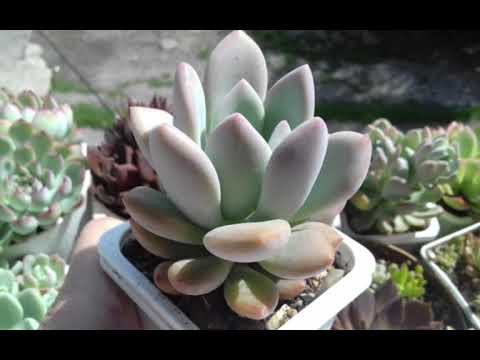

Watch this video on YouTube

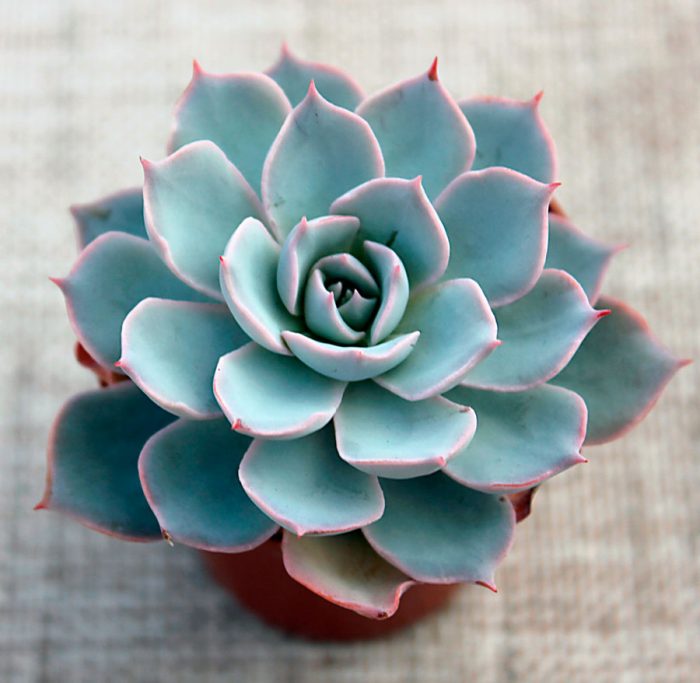
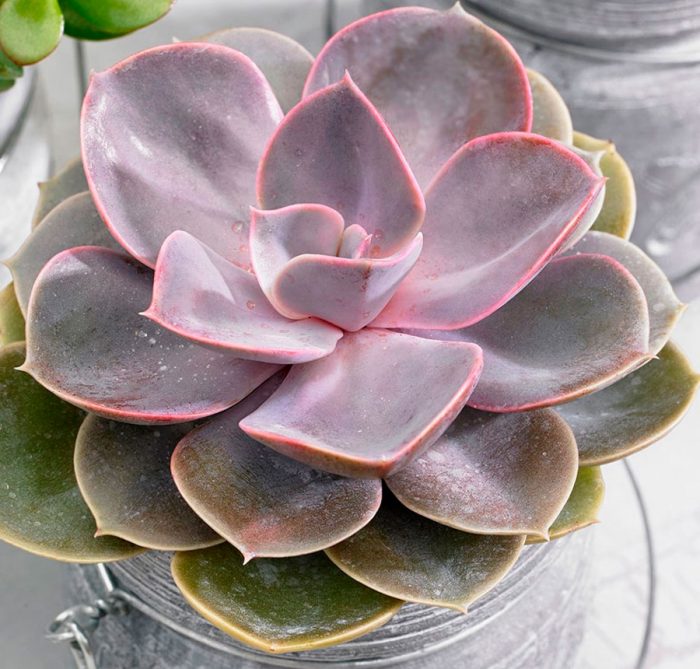
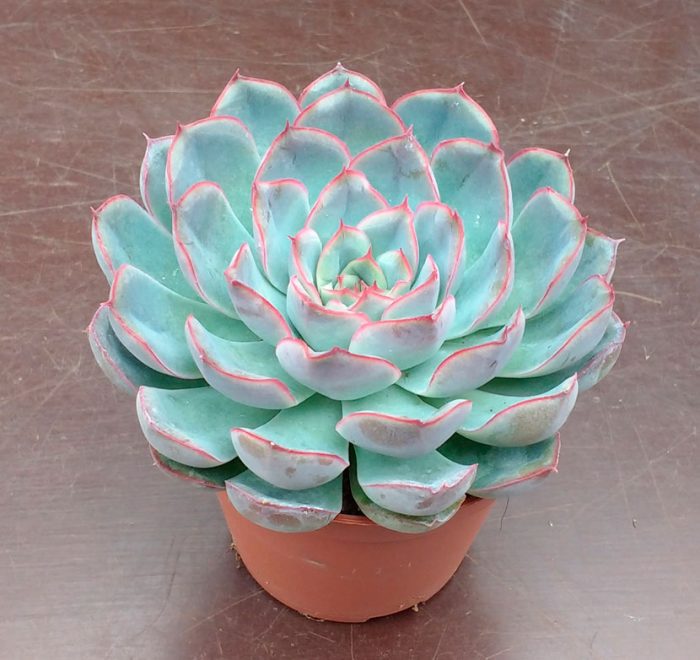
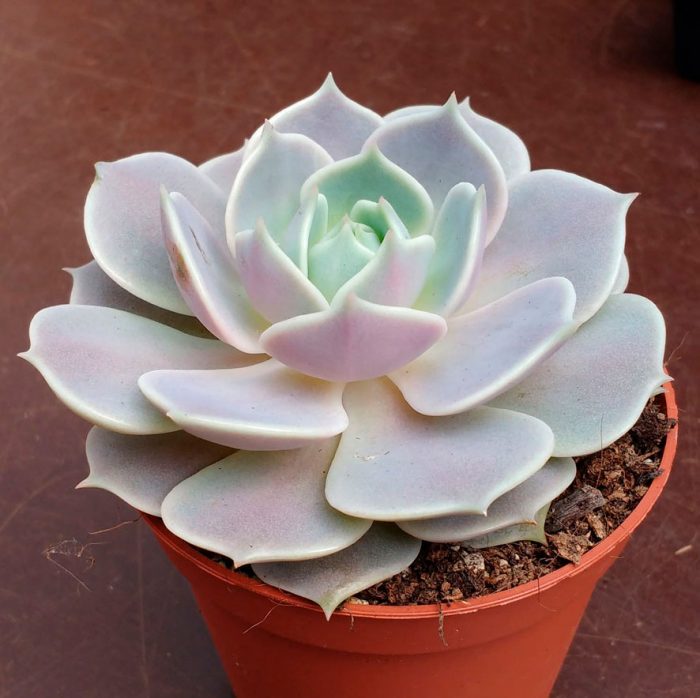
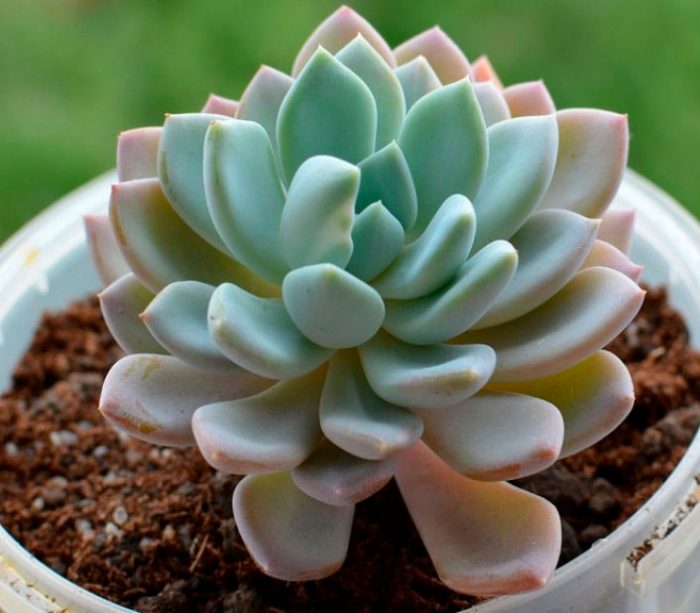

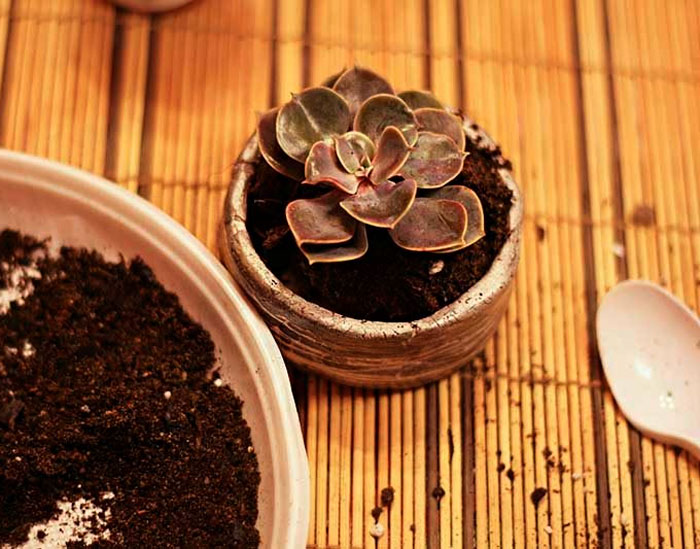
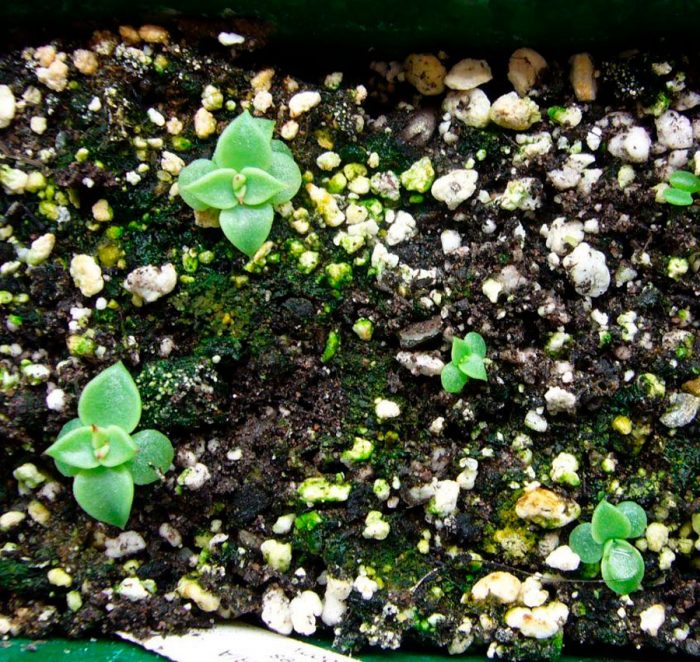

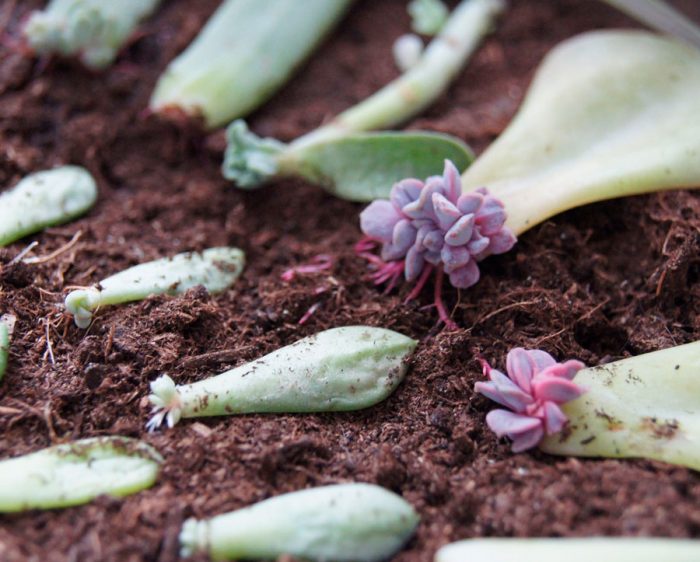

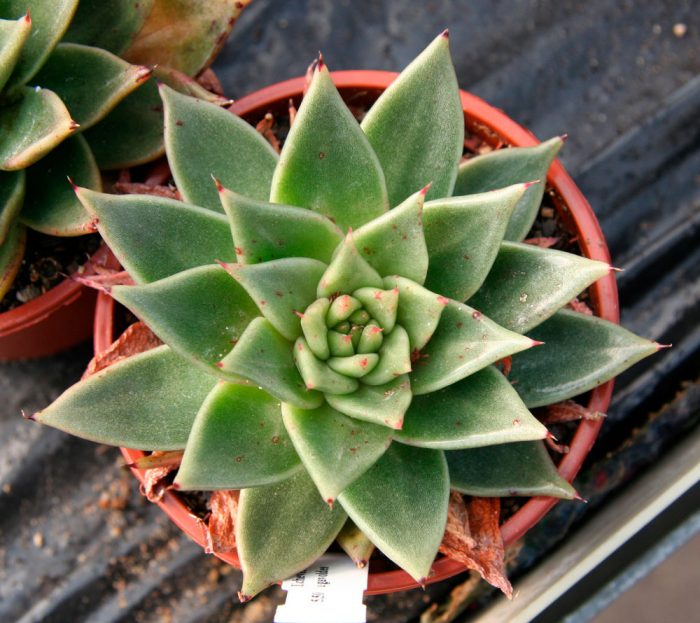
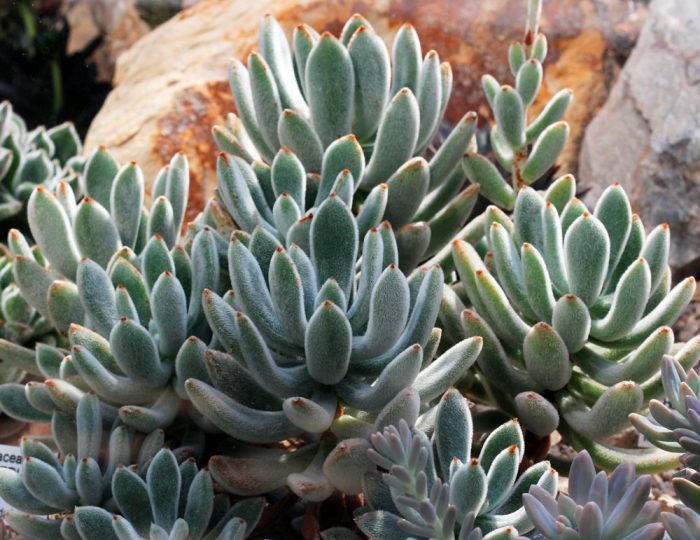
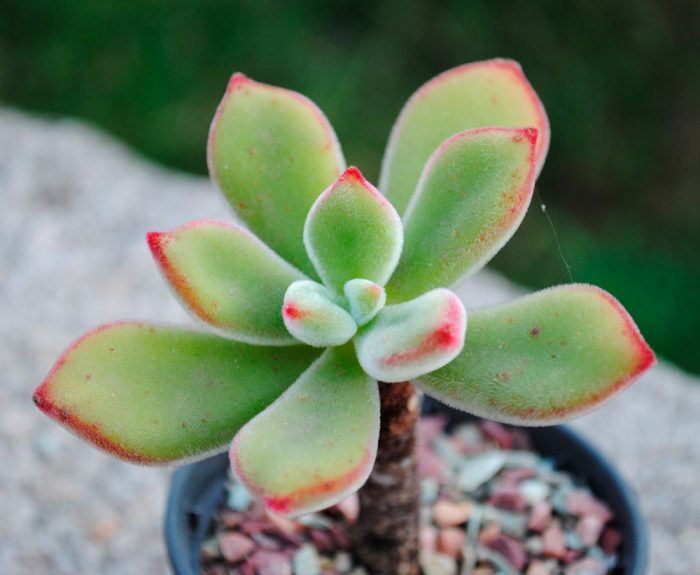
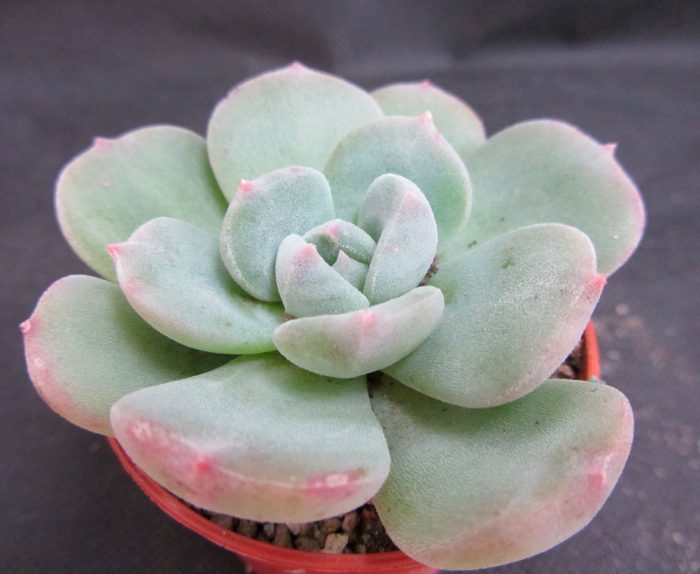
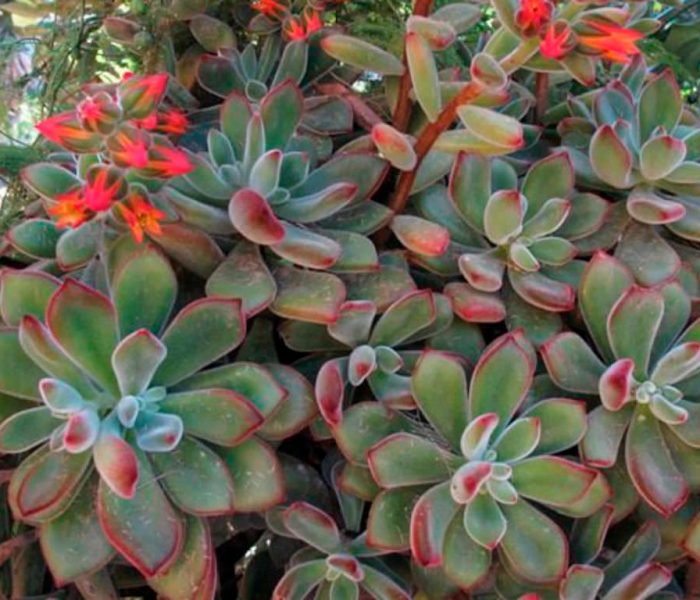

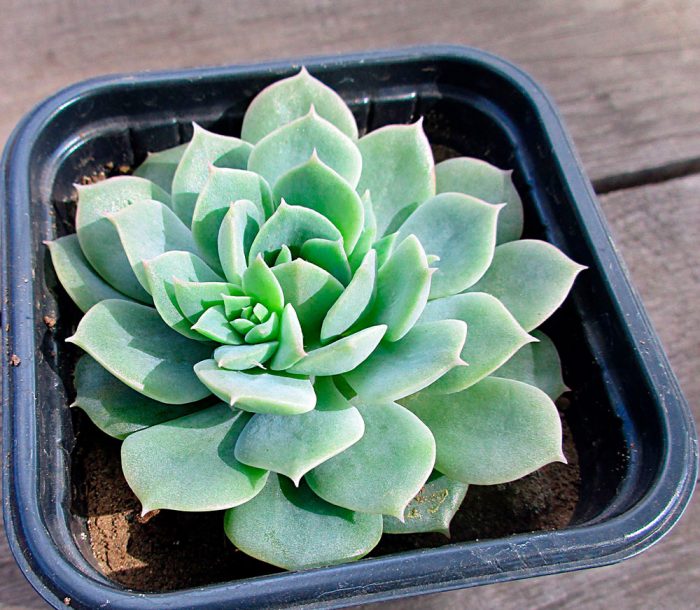
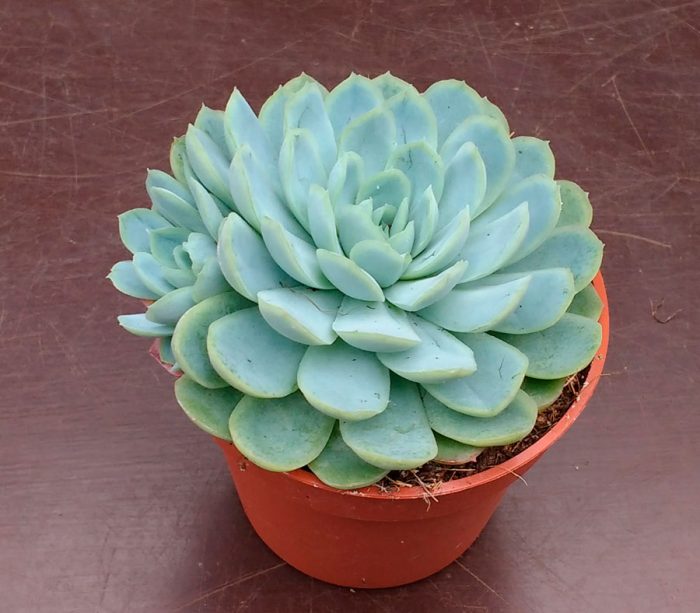
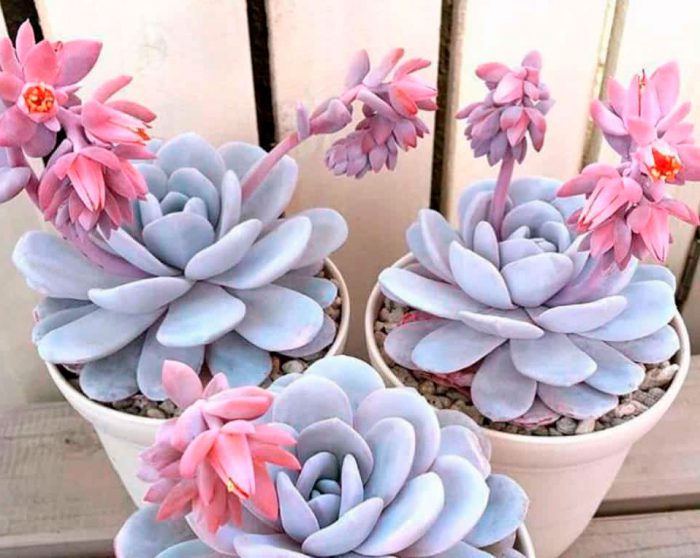
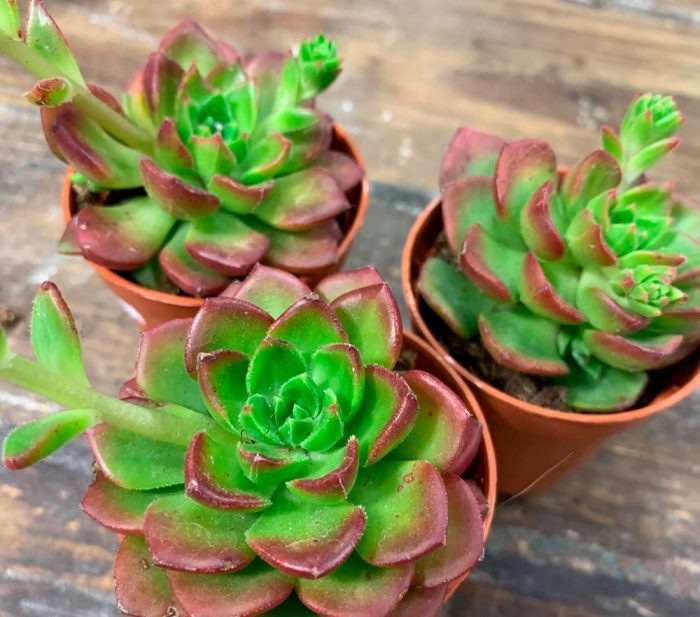
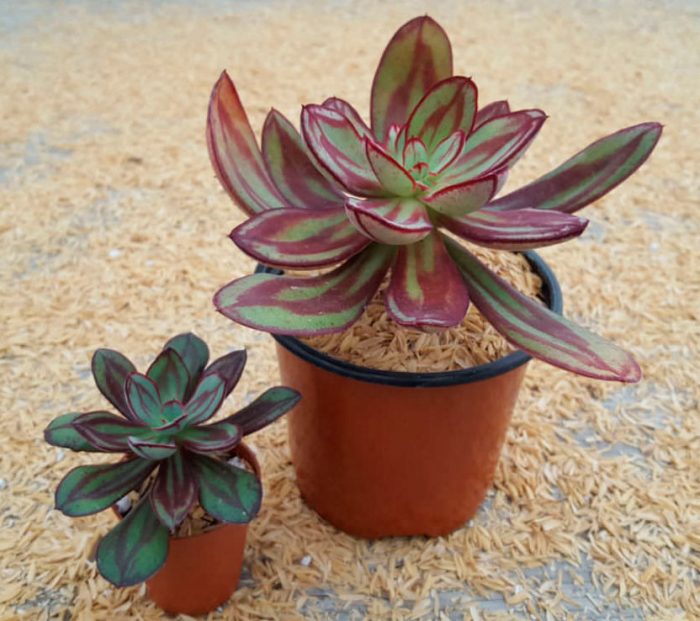
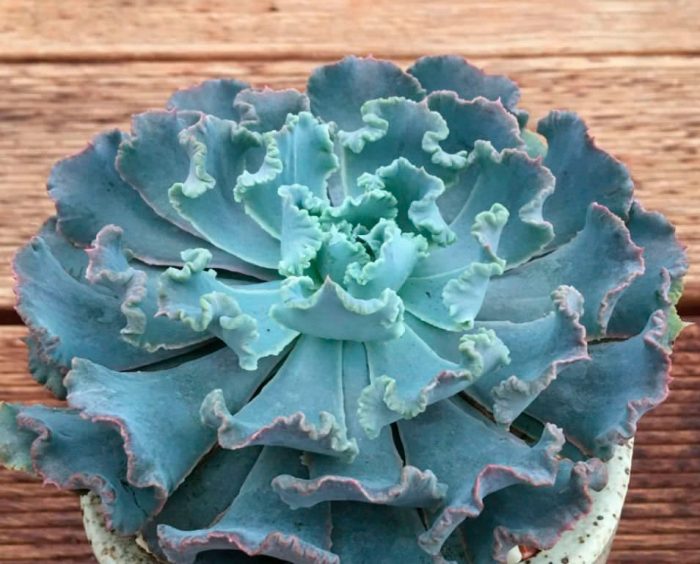
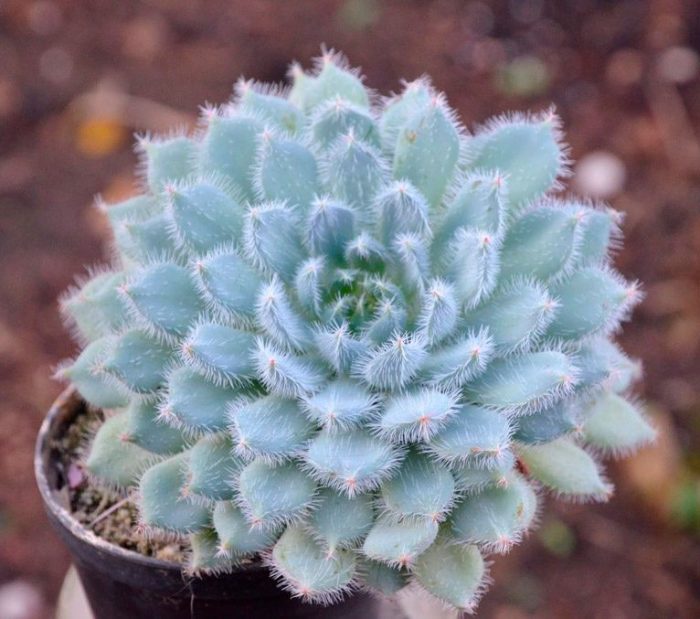
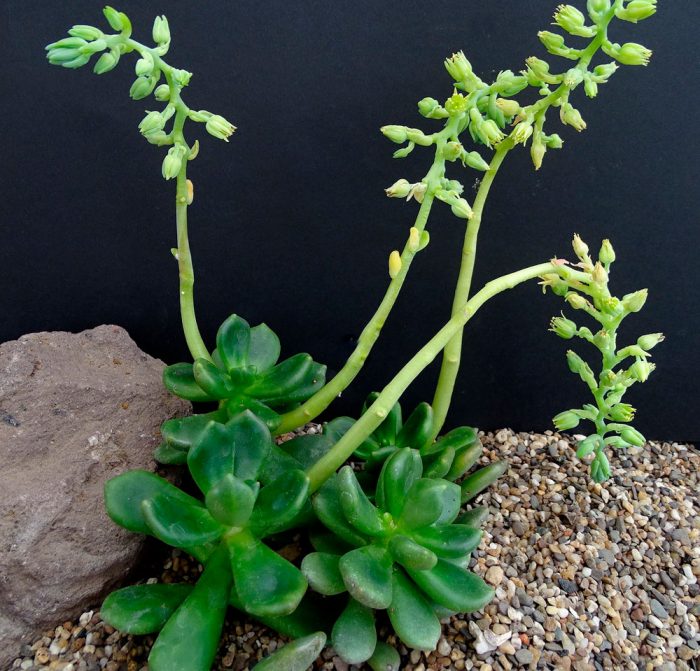
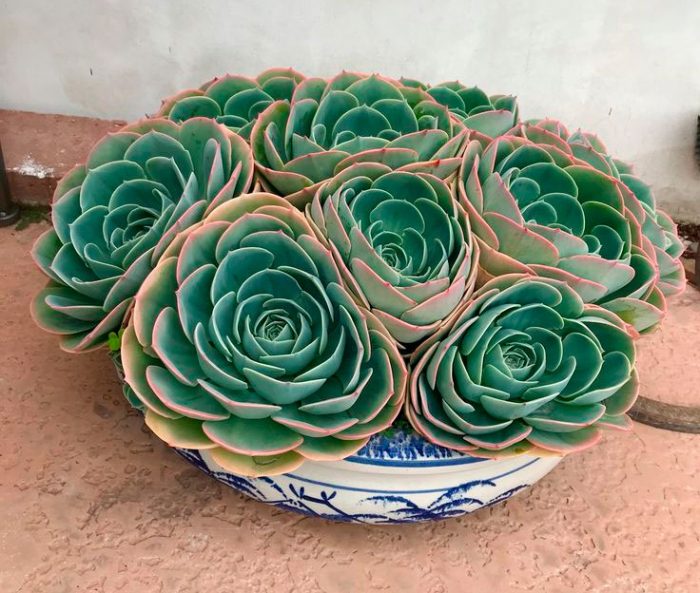
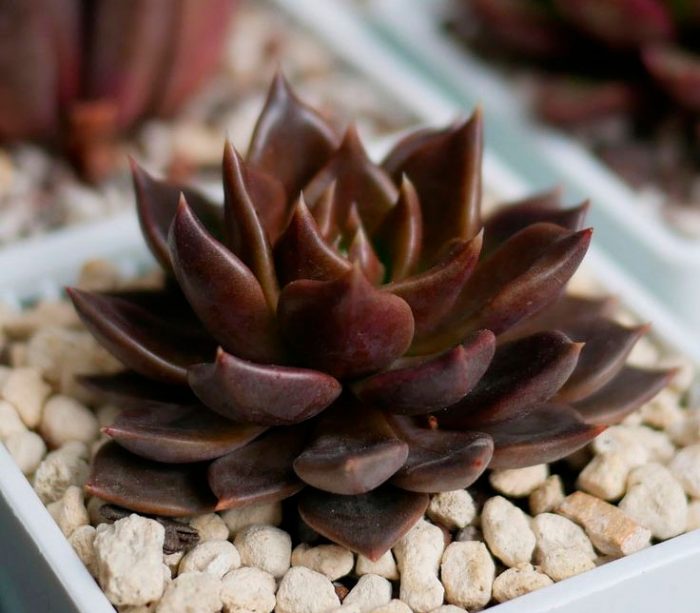
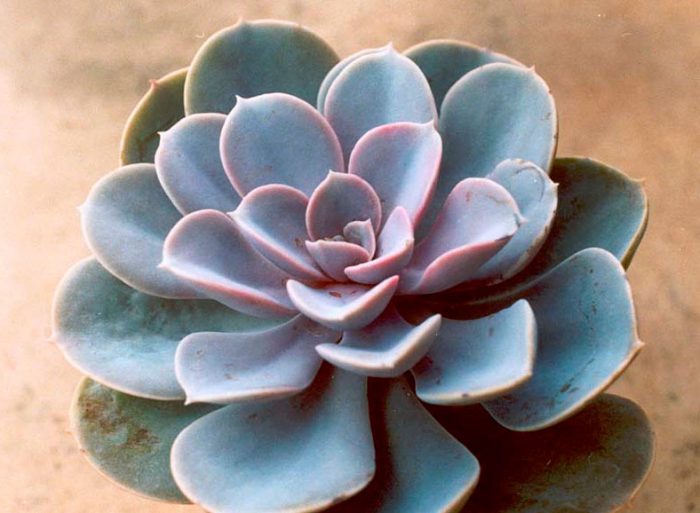
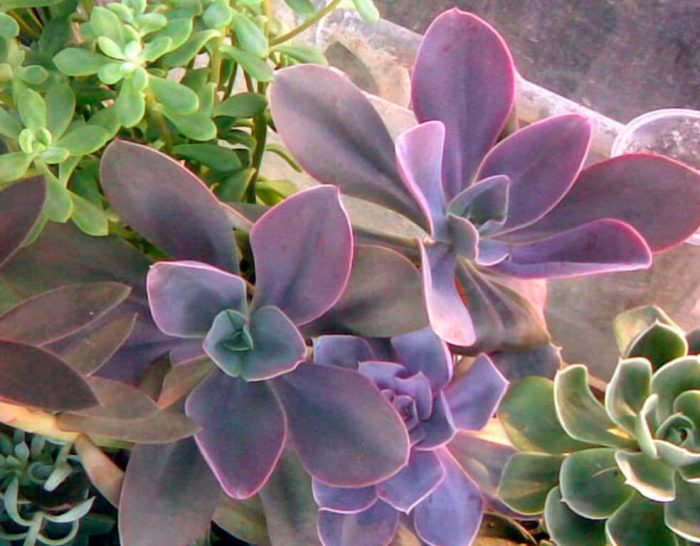


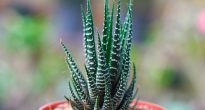
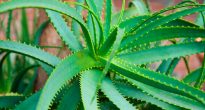

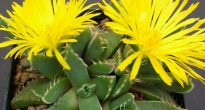
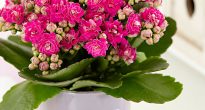
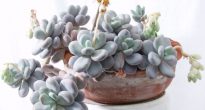
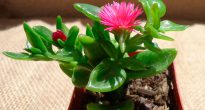


Good evening. A neighbor brought me a flower, very similar to Echeveria, only the leaves are a little thinner. I planted her in a flower bed, but there is probably excess moisture, snow from the roof. The first two years it grew well, only now the old leaves began to turn brown. Maybe they need to be formed in the spring, or maybe it can't be kept outside. Tell me, please.
If it grows on the street, it was young, echeveria would have already died from the cold. Drying of leaves is the norm for any plant. Find a specialized group about succulents and read the information in more detail, there are many controversial statements in this article.